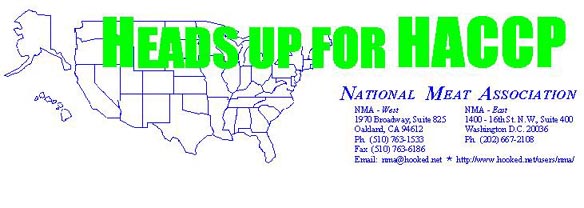

Edited by Jeremy Russell
January 20, 1998
HACCP PRINCIPLE # 5: ESTABLISH CORRECTIVE ACTIONS
What is Corrective Action?
By Mickey McEvers, Vice President, HACCP Consulting Group L.L.C
What are Corrective Actions? Corrective Actions are those written procedures a plant must follow when the HACCP plan's critical limits have been exceeded. Corrective actions must be developed for each Critical Control Point (CCP) and its corresponding Critical Limits. These corrective actions are pre-determined and included in the HACCP plan.
The establishment personnel/position responsible for taking corrective actions must be included in the HACCP plan, along with procedures for: 1) identifying and eliminating the cause of the deviation; 2) bringing the CCP under control; 3) establishing measures to prevent reoccurrence; and 4) preventing distribution of product adulterated as a result of the deviation.
If unforeseen hazards or deviations occur that are not addressed in the HACCP plan the establishment must take special action. In situations such as these the establishments' records must document the following actions: procedures used to segregate and hold affected product; perform a review to determine the acceptability of affected product for distribution; and, when necessary, take action to ensure that adulterated product is not being distributed.
With respect to Corrective Action records, whenever the plant's Critical Limits are not met there are a number of elements that will be included in the plant's records which will document the
Corrective Action(s) taken. They include, but may not be limited to: identifying and eliminating the cause of the deviation, bringing the CCP under control, establishing measures to prevent reoccurrence and preventing the distribution of possible adulterated product.
It is critical to the HACCP plan/system to have effective, well documented corrective action plans and corresponding records. A good corrective action plan and records will, when a deviation occurs, assist in rapidly identifying and isolating potentially unsafe product and take required actions. This enables the establishment to focus on bringing the CCP under control and avoiding long term production delays.